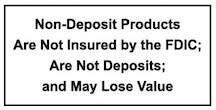Consumer Alerts
CHECK WASHING FRAUD – Check washing fraud is a type of fraud in which a scammer steals a completed, signed check from a mailbox or postbox, uses household chemicals to erase everything but the signature and then rewrites the check to send money to themselves. The information is removed using an acetone solution such as nail polish remover, and the check is then rewritten in the same type of ink used initially in the check. In most cases, checks are stolen from the mail before they are washed and rewritten. Check washing is a somewhat unsophisticated but often effective form of fraud. In order to protect yourself from check washing is to use the right pen. A black gel pen with indelible ink seeps into the check’s fibers, making check washing more difficult. And if you can, mail it at the post office — avoid using stand-alone boxes since scammers can fish for checks. Go online and make sure your check clears and take an extra step and be diligent in reconciling your account each month.
DEBIT CARD & ATM CARD FRAUD PREVENTION – Huntington Federal Savings Bank offers our cardholders extra protection on their accounts through an interactive fraud detection service. There are things that you can do to protect your card, too. Here are a few important tips:
- Never give your card number or PIN number to someone that you do not know.
- Avoid using a credit card for online purchases or when you are away from home on vacation.
- Take advantage of Huntington Federal’s FREE online banking service to keep current on your account activity.
FRAUDULENT MAIL SOLICITATION FOR MORTGAGE LOANS – A fraudulent mail scam has been reported in our area. Customers are receiving a mailing to call about their mortgage loan. The name on the mailed card is Huntington Fsb and the number listed is 844-748-0405. This is a scam. The mailing did not originate from Huntington Federal. Do not respond to this mailing. Please call our mortgage office at 304-528-6230 if you have any questions.
IMPOSTER FDIC EMAIL – The Federal Deposit Insurance Corporation (FDIC) has become aware of emails appearing to be sent from the FDIC that are asking recipients to download and open a “personal FDIC insurance file” to check their deposit insurance coverage. These emails are fraudulent and were not sent by the FDIC. Do not respond to these emails.
EQUIFAX DATA BREACH – Equifax, one of the three major credit bureaus, experienced a massive data breach. The hackers accessed people’s names, Social Security numbers, birth dates, addresses and, in some instances, driver’s license numbers. They also stole credit card numbers for about 209,000 people and dispute documents with personal identifying information for about 182,000 people.
Was my information stolen?
If you have a credit report, there’s a good chance it was. Go to a special website set up by Equifax to find out: https://www.equifaxsecurity2017.com/. Scroll to the bottom of the page and click on “Potential Impact,” enter some personal information and the site will tell you if you’ve been affected. Be sure you’re on a secure network (not public wi-fi) when you submit sensitive data over the internet.
How can I protect myself?
- Enroll in Equifax’s services. Equifax is offering one year of free credit monitoring and other services, whether or not your information was exposed. You can sign up at https://www.equifaxsecurity2017.com/.
- Monitor your credit reports. In addition, you can order a free copy of your credit report from all three of the credit reporting agencies at annualcreditreport.com. You are entitled to one free report from each of the credit bureaus once per year.
- Monitor your bank accounts. We also encourage you to monitor your financial accounts regularly for fraudulent transactions. Use online and mobile banking to keep a close eye on your accounts.
- Watch out for scams related to the breach. Do not trust e-mails that appear to come from Equifax regarding the breach. Attackers are likely to take advantage of the situation and craft sophisticated phishing e-mails.
- Should I place a credit freeze on my files? Before deciding to place a credit freeze on your accounts, consider your personal situation. If you might be applying for credit soon or think you might need quick credit in an emergency, it might be better to simply place a fraud alert on your files with the three major credit bureaus. A fraud alert puts a red flag on your credit report which requires businesses to take additional steps, such as contacting you by phone before opening a new account.
How do I contact the three major credit bureaus to place a freeze on my files?
Equifax: Call 800-349-9960 or visit its website.
Experian: Call 888-397-3742 or visit its website.
TransUnion: Call 888-909-8872 or visit its website.
Where can I get more information about the Equifax breach?
You can learn more directly from Equifax at https://www.equifaxsecurity2017.com/. You can also learn more by visiting the Federal Trade Commission’s web page on the breach at https://www.consumer.ftc.gov/blog/2017/09/equifax-data-breach-what-do. To learn more about how to protect yourself after a breach, visit https://www.identitytheft.gov/Info-Lost-or-Stolen.





